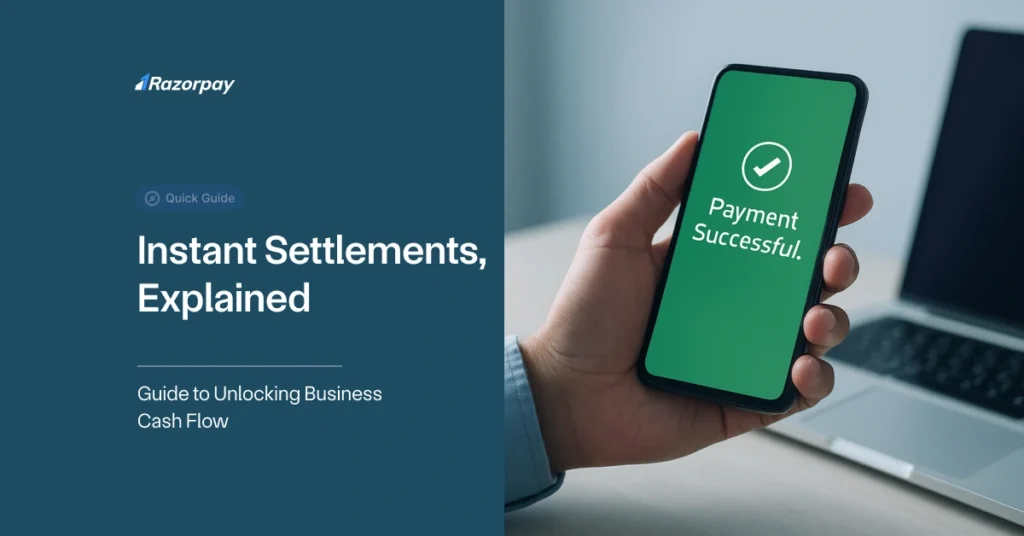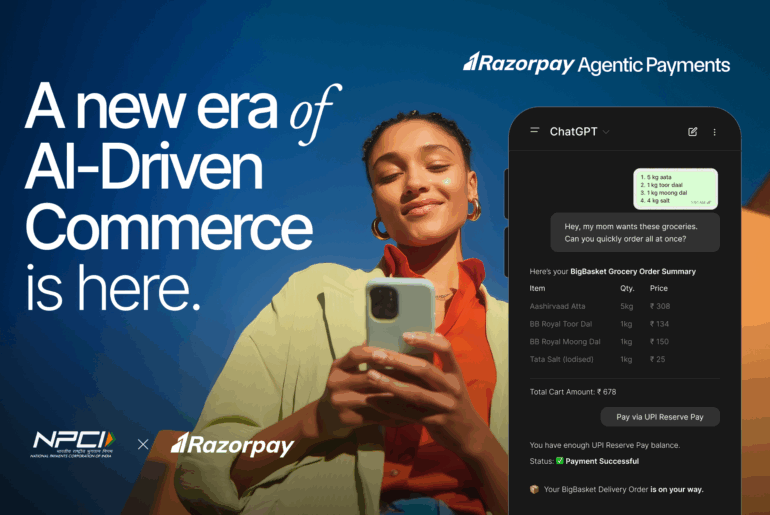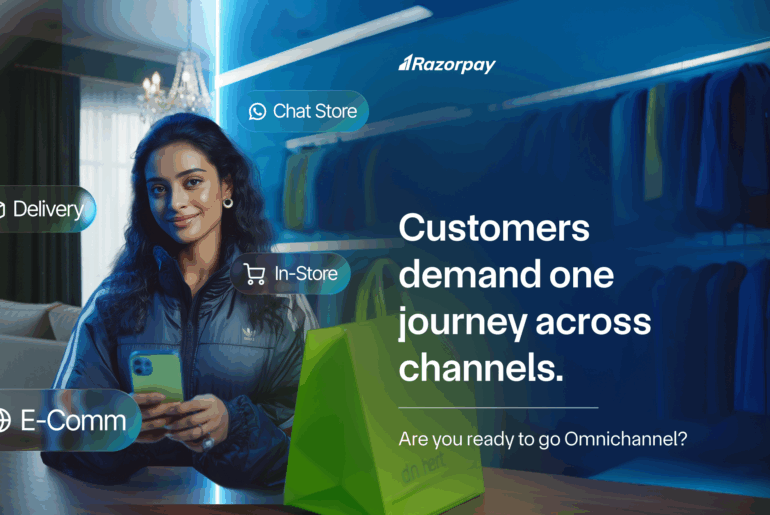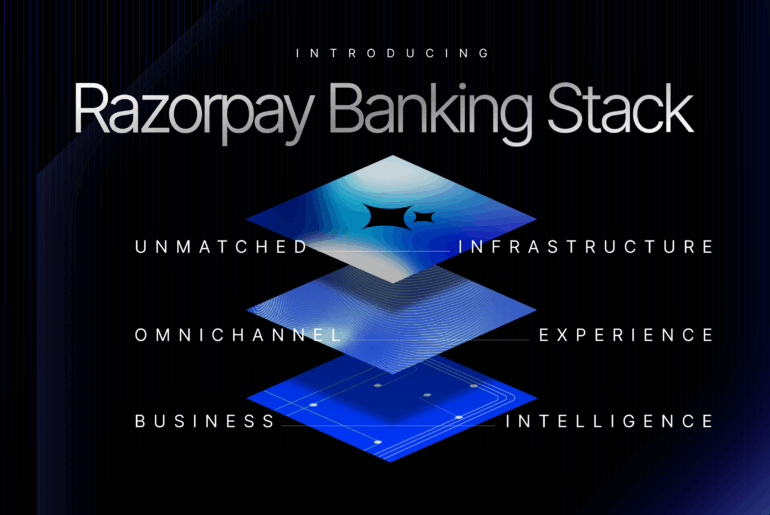“Revenue is vanity, profit is sanity, but cash is king.” This age-old business mantra still holds true-especially in 2025.
Imagine this: It’s the Monday after Diwali weekend. Tahira, who runs a thriving home decor business online, is thrilled—her sales hit an all-time high. Orders flew in, inventory moved fast, and the numbers look solid. But when she checks her bank account, reality hits. Her revenue is locked in a T+2 settlement cycle. That means she won’t see the money for another two working days.
Meanwhile, her vendors are waiting for their payments. Her team expects their bonuses. Courier partners need to be paid. Despite the successful weekend, her cash flow is stuck.
If you’re a business owner like Tahira, you know this pain. That gap between receiving payment and actually getting access to the money can slow down operations and, in peak season, cost you opportunities.
This is where instant settlement payment gateways come in. They remove the wait, giving you access to your sales revenue in real time—so you can keep your business moving without cash flow bottlenecks.
Let’s break down how it works and why it matters in 2025.
Table of Contents
Key Takeaways
Instant Settlements give you immediate access to your revenue, eliminating the delays of the traditional T+2 settlement cycle.
Faster access to funds helps you manage daily expenses, pay vendors promptly, and seize growth opportunities without relying on loans or credit lines.
You can choose between On-Demand Settlements (manual, real-time transfers) and Same-Day Settlements (automated payouts at fixed times).
When selecting a payment gateway, look beyond speed—evaluate pricing, security features (like tokenization), and the breadth of financial services offered.
What Are Instant Settlements?
Instant settlements are payment gateway features that allow you to access your sales revenue in real-time, instead of waiting days.
In the traditional T+2 cycle, funds from customer payments are settled into your account after two working days. This delay happens due to bank processing times, fraud checks, and risk assessment procedures built into legacy systems. While this protects the ecosystem, it creates serious cash flow gaps for businesses.
Instant settlements solve this by offering these two primary models:
On-Demand Settlements, where you trigger a payout any time and receive funds almost instantly.
Same-Day Settlements, where the system pushes funds to your account automatically in frequent batches throughout the day.
Both give you faster access to your money—so you stay in control of your operations.
What Is an Instant Settlement Payment Gateway?
An instant settlement payment gateway allows you to receive payments from customers and access the funds in your bank account almost immediately—typically within seconds or minutes.
This feature is especially useful when you need real-time cash flow to manage day-to-day operations, pay vendors, or reinvest in growth without delays.
For example, Razorpay payment gateway offers an instant settlement feature that lets businesses transfer incoming payments to their bank accounts 24/7, including weekends and holidays. It reduces the working capital gap and improves liquidity.
Importance of Instant Access to Business Funds
Eliminate Working Capital Gaps
Every business has daily expenses—staff salaries, office rent, vendor payments, logistics costs. Waiting two or three days for your revenue to settle can disrupt your operations and strain your cash flow. Instant settlements solve this by giving you access to your earnings as soon as a transaction is completed—so you can manage costs without delays or stress.
Capitalize on Growth Opportunities
Imagine launching a marketing campaign that goes viral or running a flash sale that empties your shelves in hours. If your funds are tied up in settlement cycles, you might miss the chance to restock or double down on promotions. With real-time access to revenue, you can immediately reinvest in ads, inventory, or infrastructure—without waiting or borrowing. That agility gives you a competitive edge.
Master Seasonal Demand
Festive periods like Diwali come with spikes in both sales and pressure. You might need to place large inventory orders, hire temporary staff, or pay delivery partners faster. Instant settlements let you unlock funds from early sales and channel them back into operations—right when demand is building. That ensures you’re never understocked or underprepared during peak season.
Avoid Late Fees and Improve Vendor Relations
Cash delays often lead to delayed payments. That can mean late fees, interest, or damaged relationships with your suppliers. With faster access to funds, you can pay on time, build trust, and even negotiate better terms with vendors who value reliability.
How Instant Settlement Payment Gateways Work?
Here’s a breakdown of how they work and the key features they offer:
Flexible Settlement Options
On-Demand Settlements: Transfer funds to your bank account within 10 seconds of a successful transaction. Perfect when you need cash now to handle sudden inventory needs or emergency payouts.
Scheduled Settlements: Set automated settlements at fixed intervals—every 15 minutes, hourly, or as per your business rhythm.
Same-Day Batch Settlements: Receive payouts at fixed times during the day—such as 9 AM and 5 PM. Ideal for businesses that prefer a structured cash flow to plan vendor payments, inventory purchases, and daily operational costs.
Holiday & Weekend Settlements
Unlike traditional banking systems that pause on non-working days, instant settlement gateways work 24/7, including Sundays and public holidays.
This ensures your cash flow stays active even when the banks are closed, keeping your operations uninterrupted.
Real-time Reconciliation & Reporting
Integrated dashboards from providers like Razorpay offer live tracking of incoming payments, settlement status, and bank credits.
With real-time visibility, you get accurate financial reporting, faster bookkeeping, and fewer reconciliation errors—helping you stay audit-ready.
Traditional vs. Instant Settlement
| Feature | Traditional T+2 Settlement | Instant Settlement |
| Speed | 1–2 working days | Within seconds to same day |
| Cash Flow Impact | Delayed access | Immediate liquidity |
| Flexibility | Fixed cycles only | On-demand, scheduled, or batch |
| Availability | Working days only | 24×7, including holidays |
| Cost | Usually lower | May involve nominal fee |
Key Factors to Consider When Selecting an Instant Settlement Payment Gateway
1. Analyse the Pricing Model
It’s not enough to look at the transaction fee alone. Many providers show a low rate—like 0.25% to 0.5% per transaction but may include additional charges like setup fees (₹5,000–₹10,000), annual maintenance, or payout fees (₹3–₹5 per transaction). These costs can add up quickly. Make sure you ask for a full price list before choosing a provider.
2. Evaluate the Core Payment Gateway
Instant settlement is only useful if your transactions succeed. Check for high payment success rates across UPI, cards, and netbanking. Also, look for value-added features like tokenization, subscription billing, and auto-retries. These ensure a smoother experience for both you and your customers.
3. Look for an Integrated Financial Ecosystem
A good payment gateway should do more than process payments. Platforms like RazorpayX offer business banking, automated payroll, corporate cards, and even credit lines as part of an integrated suite. Having all your financial tools under one roof reduces friction, improves cash flow visibility, and saves you time.
4. Check for Specialised Solutions
If you run a complex business model—like a marketplace, aggregator, or lending platform—make sure your provider supports it. For example, some gateways offer split settlements, sub-merchant onboarding, and dispute management tools specifically designed for platforms like Amazon and Flipkart. These features can make or break your payout workflows.
5. Verify Regulatory Compliance & Backing
Always choose RBI-authorised Payment Aggregators. Look for licence numbers and clear regulatory disclosures on their website. Strong investor backing—such as SBI’s stake or Y Combinator’s support for Razorpay—also signals long-term credibility and financial strength.
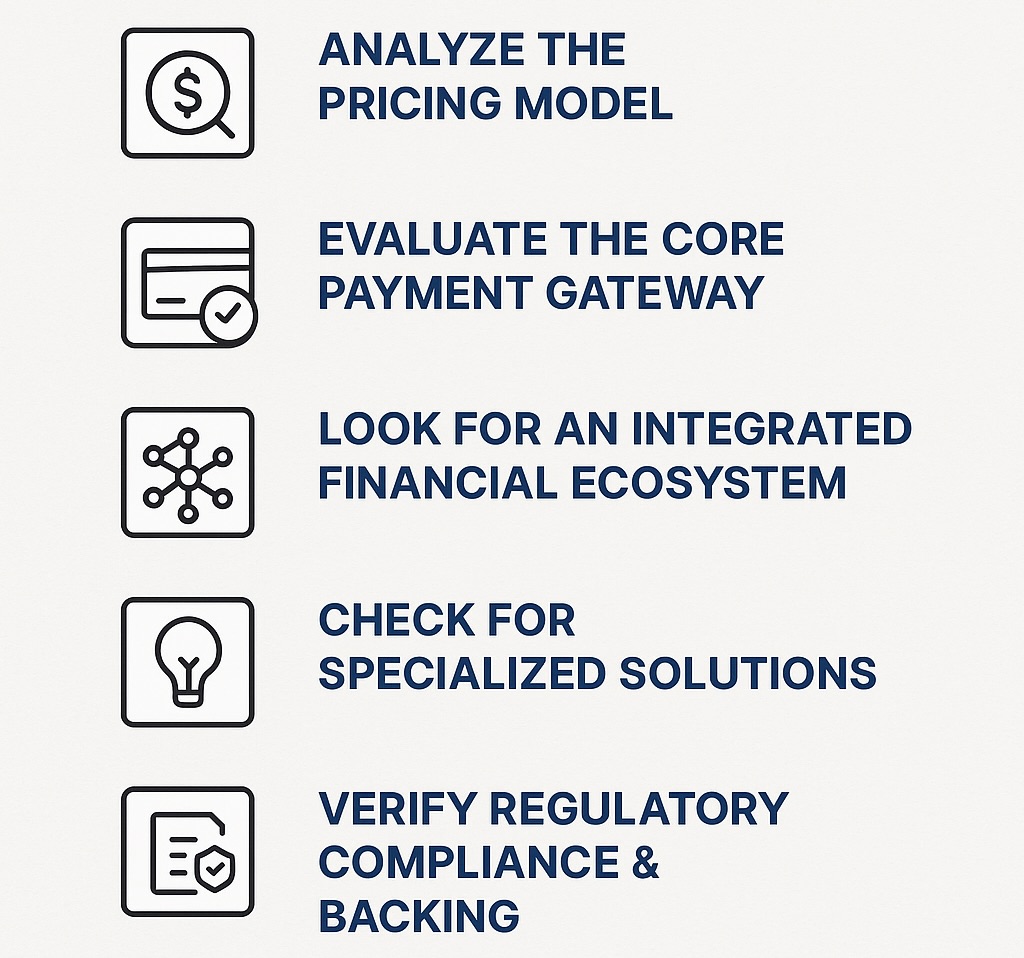
Steps to Enable Instant Settlements for Your Business
1. Eligibility and Onboarding
To unlock instant settlements, your business needs a short track record of successful transactions. Most providers evaluate your account activity for the first 50 days. They look at transaction volume, refund and dispute rates, and overall payment success. If your account shows consistent and healthy performance, you become eligible for unlimited instant and same-day settlements.
2. Activating the Feature
Once eligible, you can enable instant settlements directly from your payment gateway dashboard. In Razorpay’s case:
- Log in to the dashboard.
- Navigate to the “Settlements” section.
- Click on “Settle Now”.
- You’ll see your current balance, maximum withdrawal limit, and the withdrawable amount.
- Enter the amount you want to settle and click “Next”.
- A pop-up will show the applicable fees and taxes, along with the net credit to your account.
- Click “Settle Now” to complete the transfer.
3. Managing Your Funds
Once activated, you can use the dashboard to track all settlements in real time, view detailed payout reports, and initiate on-demand transfers whenever needed. These tools help you monitor cash flow precisely and ensure you’re always in control of your working capital.
4. Flexibility to Opt-Out
Instant settlement isn’t a locked-in feature. If your business operations change or you prefer the traditional settlement cycle, you can easily switch back to the standard T+1 or T+2 schedule from the same dashboard. The system is designed to be flexible, so you’re never stuck with one method.
Understanding the Gap Between Revenue and Cash Flow in Payment Settlements
You might be hitting your sales targets and showing profits on paper—but still struggling to pay your bills. That’s the gap between revenue and actual cash in hand—a common challenge for Indian businesses.
When a customer pays via UPI, card, or netbanking, the money doesn’t reach your account immediately. In a T+2 or T+3 cycle, it’s held for processing and risk checks. During that period, it’s still your money—but you can’t use it.
This delay puts you in a tough spot. Salaries, rent, vendor payments, and logistics costs don’t wait. So even with strong sales, your business can feel cash poor—unable to cover daily expenses despite having money on the books. That often pushes you to tap into savings or rely on short-term credit, increasing both cost and financial pressure.
How Razorpay’s Instant Settlement Payment Gateway Can Help You?
Razorpay Instant Settlements solves the core cash flow problem faced by businesses like yours—by giving you access to your funds in as little as 10 seconds after a successful transaction.
And that’s just one part of what Razorpay offers. It’s powered by RazorpayX, a platform that helps you manage all your business finances in one place. You can open a current account, automate payouts to your team or vendors, and get fast access to working capital when you need it.
This ecosystem turns your payment gateway into a strategic growth partner, not just a transaction processor. You can keep cash flowing, make faster decisions, and run leaner operations—all in one place.
Conclusion
In today’s fast-moving market, waiting days to access your own revenue is no longer acceptable. Delayed settlements restrict your ability to act quickly, whether it’s restocking fast-selling products, clearing vendor dues, or capitalising on sudden business opportunities.
Instant settlement payment gateways are no longer a nice-to-have—they’re a strategic financial tool. They give you real-time access to your funds, improve liquidity, and remove the friction from your cash flow cycle. This kind of agility helps you run a leaner, faster, and more responsive business.
If you’re serious about scaling, surviving seasonal spikes, and staying ahead of the competition, enabling instant settlements is not just smart—it’s essential.
FAQs
Q1. What’s the difference between on-demand, same-day, and standard T+2 settlements?
- On-Demand: Funds are transferred instantly (within seconds) when you trigger the payout manually.
- Same-Day: Payouts happen automatically at fixed times during the day (e.g., 9 AM and 5 PM).
- T+2: Funds are settled two working days after the transaction date—standard banking practice.
Q2. Are there any limits on the amount I can settle instantly?
Yes. Most providers set a daily cap, which is around ₹5 crores, depending on the service. The exact limit is based on your provider’s policies and may vary by business type and transaction history.
Q3. How are charges for instant settlements deducted from my balance?
Charges for instant settlements are automatically deducted from the amount being transferred. Before confirming a payout, most providers will display the applicable fee and taxes, along with the net amount that will be credited to your account.
Q4. Can I receive settlements on bank holidays and weekends?
Yes. Instant settlement gateways operate 24/7, including Sundays and public holidays.
Q5. How soon after starting my business can I become eligible for instant settlements?
Typically, you become eligible after around 50 days of quality transaction history with low dispute and refund rates.
Q6. What happens to refunds and chargebacks with instant settlements?
Refunds and chargebacks are handled the same way as standard settlements. The amount is debited from your account balance or held from future settlements.
Q7. Can I switch back to the normal settlement cycle if I want to?
Yes. You can easily opt-out and return to the standard T+1 or T+2 cycle anytime via your dashboard settings.
